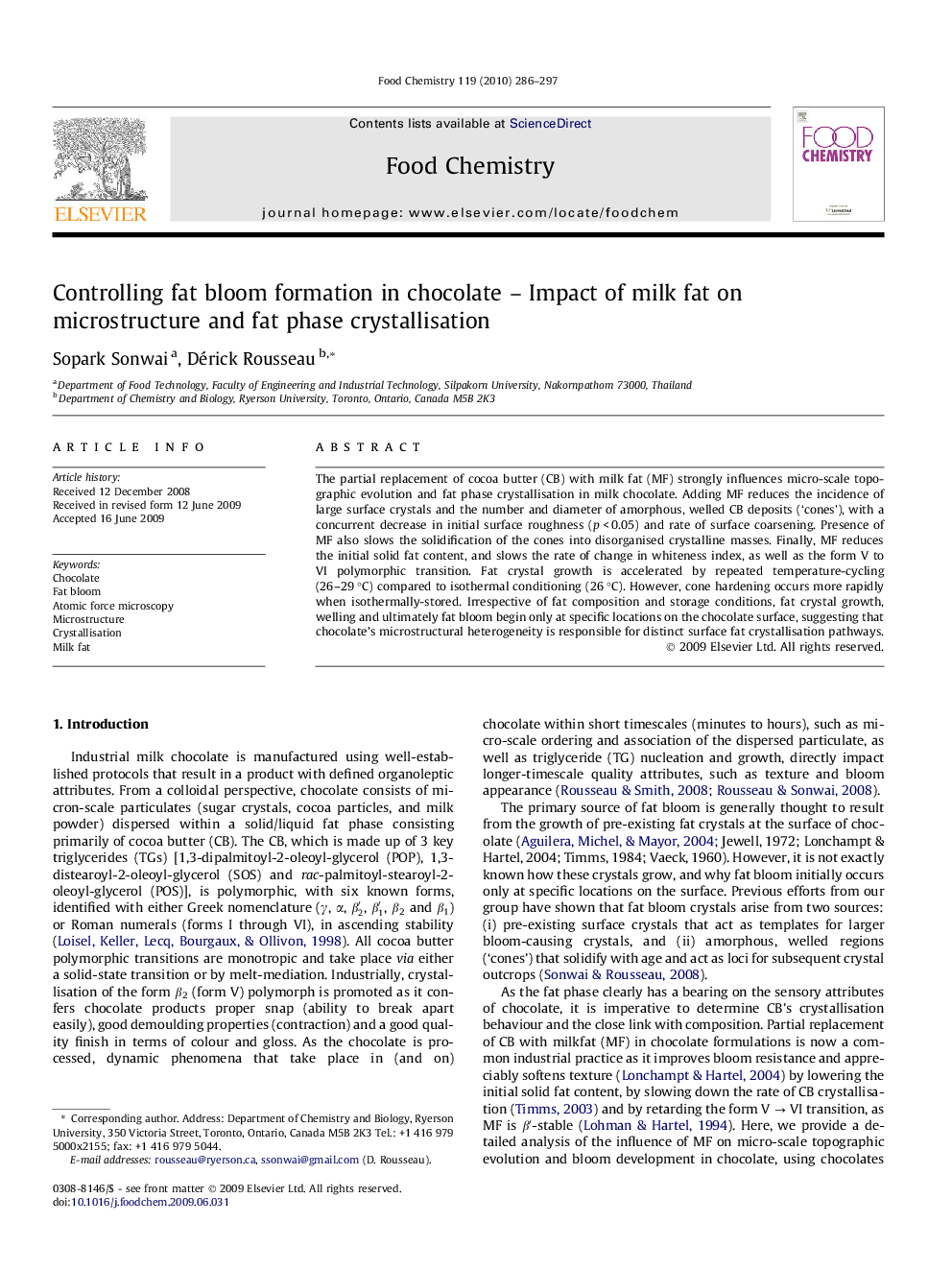| Article ID | Journal | Published Year | Pages | File Type |
|---|---|---|---|---|
| 1186784 | Food Chemistry | 2010 | 12 Pages |
The partial replacement of cocoa butter (CB) with milk fat (MF) strongly influences micro-scale topographic evolution and fat phase crystallisation in milk chocolate. Adding MF reduces the incidence of large surface crystals and the number and diameter of amorphous, welled CB deposits (‘cones’), with a concurrent decrease in initial surface roughness (p < 0.05) and rate of surface coarsening. Presence of MF also slows the solidification of the cones into disorganised crystalline masses. Finally, MF reduces the initial solid fat content, and slows the rate of change in whiteness index, as well as the form V to VI polymorphic transition. Fat crystal growth is accelerated by repeated temperature-cycling (26–29 °C) compared to isothermal conditioning (26 °C). However, cone hardening occurs more rapidly when isothermally-stored. Irrespective of fat composition and storage conditions, fat crystal growth, welling and ultimately fat bloom begin only at specific locations on the chocolate surface, suggesting that chocolate’s microstructural heterogeneity is responsible for distinct surface fat crystallisation pathways.
